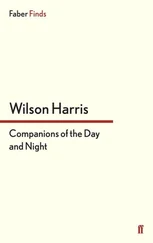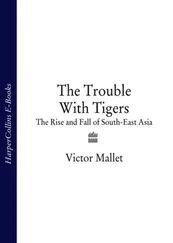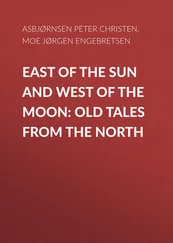In fact, the current inaccessibility of the ruins is already leading to a resurgence in the consideration of records from times long gone. Old paintings, and slightly less old photographs, are now being rediscovered as important sources on the preservation of the site in the early modern period. In late 2015, the Arthur M. Sackler Gallery in Washington DC organized a small exhibition of eighteenth-century engravings and nineteenth-century photographs which had undergone sepia toning. In 2016, an exhibition at the Wallraf-Richartz-Museum in Cologne focused on representations of Palmyra by the French artist Louis-Francois Cassas, whose exquisite drawings were made during a one-month visit in 1785 and published in the first of three volumes recording his Levantine illustrations (Bredekamp et al. 2016). From November 2016 until February 2017, an exhibition on “Palmyra, city of the thousand columns” was organized in Deventer, a small town in the east of the Netherlands where the western fascination with Palmyra had begun when Gisbert Cuper, Deventer’s mayor at the end of the seventeenth century, commissioned a large (4 m) painting of the ruins from the Dutch artist Gerard Hofstede van Essen, who had participated in a British expedition to Palmyra in 1693. One year later the painting, “Zicht op Palmyra” (View toward Palmyra) arrived in Cuper’s house and – now hanging in the Allard Pierson Museum in Amsterdam – remains the oldest portrayal of the oasis ruins. Most recently, the Getty Research Institute has launched its first online exhibition on The Legacy of Ancient Palmyra .
Renewed attention also continues to be given to archival and photographic material and historiographical studies analyzing previous scholarship on the subject matter. Rubina Raja and Jean-Baptiste Yon have edited Harald Ingholt’s excavation diaries (covering his campaigns at Palmyra in 1924–1925, 1928, and 1937) for publication in the new series Studies in Palmyrene Archaeology and History . Archival research has already revealed how the most famous of all Palmyrene funerary reliefs, known as “the Beauty of Palmyra” and part of the collection of the Ny Carlsberg Glyptotek in Copenhagen, came from a specific tomb in Palmyra excavated by Inholt: its precise place of discovery previously unknown, it can now be connected with other finds from the same tomb (Raja and Sørensen 2015). Away from Palmyra, the landmark publication of the correspondence between Cumont and Rostovtzeff (Bongard-Levine et al. 2007) has allowed new insights into the early days of scholarship on Dura-Europos, another site now destroyed (cf. Praet et al. 2020, the first of two installments in the Bibliotheca Cumontiana dealing with Cumont’s output on the Euphrates small town, the second being the republication of his 1926 monograph Fouilles de Doura-Europos , 1922–1923 , both with historiographical introductions by the current writer). The late Judith McKenzie, in what her obituary referred to as “a remarkable tale of modern detective work in archaeology” (Walmsley 2019: 3), used Nelson Glueck’s field records, archived in Harvard’s Semitic Museum, to revisit Glueck’s reconstruction of the temple at Khirbet-Tannur (McKenzie et al. 2013). McKenzie also created the Manar al-Athar photo archive, a free resource providing high-resolution, searchable images of sites, buildings, and art from the Middle East ( http://www.manar-al-athar.ox.ac.uk).
Still, at Palmyra as elsewhere, much is now lost for ever. Some material will from time to time surface, or be properly intercepted from the black market, but the main problem will be that we have just the object, without the context. If it cannot be known where (precisely, or in general) inscriptions or sculptures were set up and if the archaeological context to date them is lost, these sources become a lot less useful. The discussion also has a moral dimension. In a paper on “Scholarship and insurgency? The study and trade of Iraqi antiquities,” Neil Brodie of the Scottish Centre for Crime and Justice Research of the University of Glasgow let the following imaginary exchange take place between an archaeologist and an epigrapher (Brodie 2011). According to the archaeologist:
The academic study and publication of looted cuneiform tablets and other inscribed artefacts from Iraq is unwarranted. Their value as historical documents has been compromised by the loss of contextual information caused by their looting. Furthermore, study and publication increases their monetary value, thereby promoting the market, which is particularly regrettable as the illegal antiquities trade within Iraq is controlled and organized by armed insurgents.
But the epigrapher claimed instead:
This analysis is mistaken. The value of looted tablets and other inscribed artifacts as historical documents is only minimally reduced by the loss of contextual information, and the loss to historical knowledge will be greater if they are not studied and published. There is no evidence to suggest that academic study and publication promotes the market, or that the antiquities trade is in the hands of armed insurgents.
It seems clear (from publications) that different sub-disciplines focusing on the ancient world continue to have different approaches to the problem.
It is undeniable that the unprecedented destruction of archaeological remains has damaged the field of Hellenistic and Roman Near Eastern studies. The field, however, is not closed for further research (see, for example, the recent collection “Remembering Roman Syria,” edited by Jen Baird and Zena Kamash as an issue of the Bulletin of the Institute of Classical Studies : Baird and Kamash 2019). More international and interdisciplinary networks are needed which focus on various sites within the region, in order to think about the way in which the next generation of scholars (of any discipline) can be trained in such a way that the fact that they will be the first who are unable to see the ruins of the Near Eastern lands in the way that their predecessors could still experience them will not be detrimental to their own future contributions. Possible avenues for collaboration are digitization of available resources, shared documentation, creation of databases of artifacts (an excellent example is the upcoming publication of the corpus of Palmyrene funerary sculpture by Rubina Raja’s Palmyra Portrait Project: https://projects.au.dk/palmyraportrait), joint grant applications, and collaboration on wider public engagement activities. Needless to say, the next generation will have their hands full with damage assessment and conservation issues, and – where possible – analysis of recovered items. May the chapters that follow play a role in facilitating that process!
CHAPTER 2 Historical Narrative
Maurice Sartre
Between the battle of Issus (November of 333 BCE) at the entrance to North Syria and that of Gaugamela (1 October 331 BCE) to the north of Mesopotamia, the destiny of the Achaemenid Near East was decided: the former opened Syria to Alexander of Macedon, and the latter gave him all of Mesopotamia since Darius III chose to flee to Iran. The siege of Tyre (January to July of 332 BCE) and that of Gaza (September to November of 332 BCE) marked local resistance along the route from Egypt, but not a widespread refusal of Macedonian dominance. Alexander made no changes to the existing administrative framework and was content to switch men. Although the sources do not enable us to understand with certitude the choices of Alexander, he could only have placed trusted men in Syria and Mesopotamia because the loyalty of these provinces was essential for the communications of his army with the Mediterranean world. He even left the Phoenician kings in place – with the exception of the king of Sidon, who was put into power by the Persians, whom he replaced by a member of that city’s former royal family ― and was content to appoint for this region a financial officer in charge of collecting tribute.
Читать дальше












